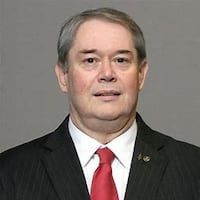The protocol is that each of the four fire houses would have three firefighter/paramedics during each shift instead of five on duty previously. Based on the profile of the call, the fire department will respond with the most appropriate piece of equipment, an ambulance for EMS calls or a fire apparatus for fire/rescue calls, instead of sending out both vehicles. If additional personnel or equipment can be dispatched as needed.
“We went to First Emergency First out of necessity because our financial resources were decreasing,” said Fire Chief Paul Lolli said. “First Emergency First has allowed us to do the most good for the greatest number of runs. I feel that it has been a successful operational profile and it has allowed us to protect the citizens of Middletown and stay within budget.”
Lolli said Springfield has utilized the First Emergency First protocol for more than a decade and Hamilton had explored it but opted for a different plan.
Hamilton Deputy Fire Chief Mark Mercer said firefighter/paramedics there have “felt the pain of readjustment.”
“The numbers didn’t add up for us,” he said. “We’re not the same size as Springfield.”
Mercer said the city working with its fire union, IAFF Local 20, re-evaluated the service areas and the locations of its fire stations which resulted in the shifting of territories. He said this resulted in more available fire units at all times along with cross-trained staff in reserve.
“We adjusted our units to get the right resources at the right time,” he said.
Staffing changes in Middletown
In addition to the new protocol, Middletown also had to reduce the number of firefighter/paramedics from 16 to 13 per shift forcing a staff reduction by 15 through a combination of layoffs and attrition as well as closing the fire station on Tytus Avenue. Lolli said most who were laid off have been recalled as a result of resignations and retirements. Currently there are four fire stations along with 60 firefighter/paramedics, including Lolli.
“I know that the minimum manning at 13 has put stress on our firefighters but it’s not because of First Emergency First,” he said. “This works better with minimum manning at 16.”
Doug Adkins, Middletown’s city manager, agrees that running the new protocol with 13 firefighters has been tough.
“Under the conditions and the budget constraints we were facing, it was the best operating protocol for the moment,” he said. “It’s going to be a work in progress for a few years.”
He said the city is looking at other ways to work with neighboring communities and sharing resources to take advantage of additional resources without adding more staff and equipment.
Most calls for service are covered
Since the new protocol started, Lolli said the MFD has covered 98 percent of its calls for fire and EMS service and that the run volume and work load is more spread out among those who are on duty during a given shift than before.
He said firefighter/paramedics make 19 to 20 runs per 24-hour shift. As of 10 a.m. Aug 5, there have been 6,488 calls for service for 2015. In 2014, there were 13,293 calls for fire and EMS services. Lolli said more than 80 percent are for EMS services.
While the average response time has crept up for the first six months of 2015 about 20 seconds, Lolli said that cannot be attributed to the new protocol. So far in 2015, the average response time is 5 minutes, 43 seconds to respond, compared to the 2014 average response time of 5 minutes, 23 seconds.
“This still keeps us with in the National Fire Protection Association’s national standard of being able to provide advanced life support within eight minutes, 90 percent of the time,” he said.
Lolli and said that mutual aid responses from neighboring communities have not increased significantly and said it is not a result of the new protocol. He said the small increase of mutual aid responses is due to an increase in non-life threatening EMS runs. Lolli has estimated that 70 percent are legitimate EMS calls.
He said there has been an increase in injuries but that also cannot be attributed to the new protocol.
“We have seen less wear and tear on our fire apparatus which has equated to less fuel consumption, maintenance, and repair, and therefore greater savings for the taxpayer,” he said.
Lolli estimated the savings at between $40,000 and $50,000 so far in 2015.
Fire union still concerned
Jon Harvey, acting president of IAFF Local 336 who represents Middletown’s firefighters, said there are still concerns about the protocol.
“The biggest problem First Emergency First is not having enough people,” he said. “You can rearrange equipment any number of ways but if you don’t have the people on, that’s where the problem is. If we could add more people it would be easier to make work…. I can’t say if it’s better or worse because there are not enough people.”
Harvey said there are other problems such as moving turnout gear from one vehicle to another due to the type of emergency that may be needed. If something is forgotten, that creates another set of issues, he said.
“Some people don’t mind it. Some people hate it,” Harvey said. “I believe the majority would say dump it.”
About the Author
